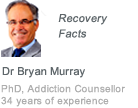Morphine Addiction
Morphine is the most heavily used derivative of opium on the drug market and morphine addiction, while less common than it once was, counts among the longest-term abusers of the drug in its numbers. Morphine is still manufactured as a pain killer and is commonly used in hospital emergency departments along with hospices (for the terminally ill) where it is freely given for effective and fast pain-relief. Pharmaceutical grade morphine is a target for morphine addicts to avoid the impurities that street level drugs are adulterated with.
The origins and legal status of morphine
Morphine is a derivative and distillation of opium and shares many of the pharmaceutical properties of opium. Morphine addiction is often ‘created’ by prescription of the drug for pain relief rather than by deliberate recreational use. This is accepted as a by-product of treatment for terminal conditions such as cancer, where it is of no consequence if the patient becomes addicted – all that matters is providing an effective relief from the pain of the condition for as long as possible.
Morphine was first used as a pain-killer; either administered orally or by injection and was in common use as far back as the American Civil War and the Franco-Prussian war in Europe. It is estimated that over 400,000 American civil war soldiers were sent home with packs of morphine as an analgesic for war wounds and morphine addiction was often called the ‘Army Disease’.
Surprisingly, and quite erroneously, morphine was prescribed as a cure for opium addiction and was recommended by doctors to patients who were able to buy the drug over the counter at drugstores and even by mail-order via catalogs that were available before the 20th century. In 1906 a number of laws restricting the importation of opium were enacted in the United States and the 1914 Harrison Act banned possession of narcotics (including morphine) unless prescribed by a physician. Morphine remained a very popular recreational drug until heroin (heroin was also believed to be a drug that would be a cure for morphine addiction at first,), became readily available.
Today, the legal status of Morphine is that of a Schedule ll drug in America – it can be prescribed and sold but only with a DEA license and may not be possessed unless prescribed.
In the UK and Britain the drug is a Class A drug and illegal to possess unless prescribed by a doctor and then supplied by a chemist under very closely controlled conditions.
In the UK a notorious case of multiple homicides by Doctor Harold Shipman who administered fatal doses to more than 100 patients highlighted the need to control and monitor the use of morphine.
Morphine addiction: use and effects
Morphine can be taken in a variety of ways:
- Intravenous injection
Morphine is dissolved in water, the effects are felt almost immediately - Oral
In pill, tablet of capsule forms, the effects take longer to appear and the initial impact of ingestion is lessened - Inhalation
Morphine can be inhaled directly as a powder, this is fast acting but morphine irritates the sinuses and some may be lost in a sneeze reaction - Smoked
Morphine is ‘cooked’ by indirect flame and the smoke is then inhaled. This is very fast acting as the smoke passes the opiate directly into the bloodstream via the lungs - Rectal Suppositories
Morphine is one of very few drugs that can be taken this way. The suppositories enable the addict to hide their addiction longer as there are no external residues or damage
Morphine is highly addictive but can take some time before full-blown morphine addiction occurs. Once the addict has developed an addiction it is very difficult to ease away from and severe withdrawal symptoms will be felt. The effects of morphine use are many and complex. The drug acts directly on the central nervous system and produces a number of different effects:
- Relieves pain
- Produces euphoria and a sense of ease
- Relieves anxiety and can reduce paranoiac symptoms
- Decreases hunger but also causes constipation and wind
- Reduces the sex drive and the libido in both sexes
- Reduces the cough reflex and mucous production
- In women morphine can interfere with their periods and create irregular menstrual cycles.
- Because the drug can pass the placental barrier the children born to Morphine Addicted mothers will show signs of withdrawal from birth.
The effects of a single dose will last up to four or five hours depending on the strength and purity of the drug. But over time a morphine addict will develop a tolerance for the drug and will require larger and larger doses to reach the same high. The long term effects of morphine addiction can be highly debilitating and include:
- Mental impairment due to continued narcosis
- Mood swings
- Slurred speech
- Sleepiness
- Reduced or eliminated sex drive
A profile of morphine addiction
While there are recreational morphine addicts it is far more common to find long-term users of the drug to relieve chronic pain, especially back pain and migraines, suffer with morphine addiction. As a consequence morphine addicts can be from any part of society and from any age, or gender cultural grouping.
The addictive qualities of morphine are now well understood, but for many people suffering from chronic and debilitating pain there may be no better relief available for them. Frequently morphine addicts were already suffering from physical problems before their morphine addiction was formed.
Treating morphine addicts
Withdrawal from morphine addiction is a long and very painful process which many addicts will consider far worse than the addiction itself. Also to be borne in mind is that the underlying issues that caused them to use the drug in the first place may still be present and so a full understanding of the reasons for the addiction must be considered as part of any treatment regime. Many morphine addicts will still require succor and support for chronic pain as well as for physical issues that have not been resolved and only alleviated by the use of morphine.
Physical withdrawal may take anywhere between three days and a week depending on the length of time that the addict has been using. The actual process is itself very painful to the addict and may also uncover an underlying condition that has been masked. Typical withdrawal symptoms may include:
- Stomach and leg Cramps
- Muscle spasms
- Watery eyes
- Runny nose
- Nausea and diahorrea
- Vomiting
- Twitching and shaking
- Raised hair follicles making the addict’s skin look like a plucked bird
- Wide and extended yawning, often dislocating the jaw
Once the first stages of physical withdrawal have been undertaken, and the addict is becoming more lucid again, they will need to resolve other, emotional and physical distress, and treatments allied to a whole body regime need to be put in place:
- Yoga is very useful for training the body to resolve itself
- Acupuncture and acupressure to help relieve pain that the addiction was masking
- Emotional healing for the trauma of withdrawal
- Touch therapy is often of use to help retrain the addicts body to a normal condition
- Healing oils and essences to help the addict to develop an inner peace that may be missing after withdrawal of the narcotic drugs
- Counseling and personal assistance are crucial for successful treatment and to help the addict reintegrate to the outside world
Assistance and continued, non-judgmental, support from friends and family will help the addict to recover their place in the world. During the most acute phases of their addiction many addicts may have become estranged from the people around them and lost contact with their closest family. Part of the process of recovery, with the help of skilled and experienced professionals, maybe to reconnect those lost threads, make sincere and real apologies to those the addict has hurt or harmed and begin to re-evaluate the value of those connections.
A sympathetic environment during the acute and difficult early phases of morphine addiction treatment and recovery, away from the temptations and difficulties the addicts face every day in the world they inhabit as an addict, is an incredible aid in recovery. When the programme of detox and first stages of rehab are complete the addict will still need help and support as they adjust to life without the highs and lows of morphine addiction to hide in.
Continuing interactions with therapists such as psychologists, family and friends and other professional support workers will help the addict to understand and accept responsibility for their long-term, sustained recovery from morphine addiction.












